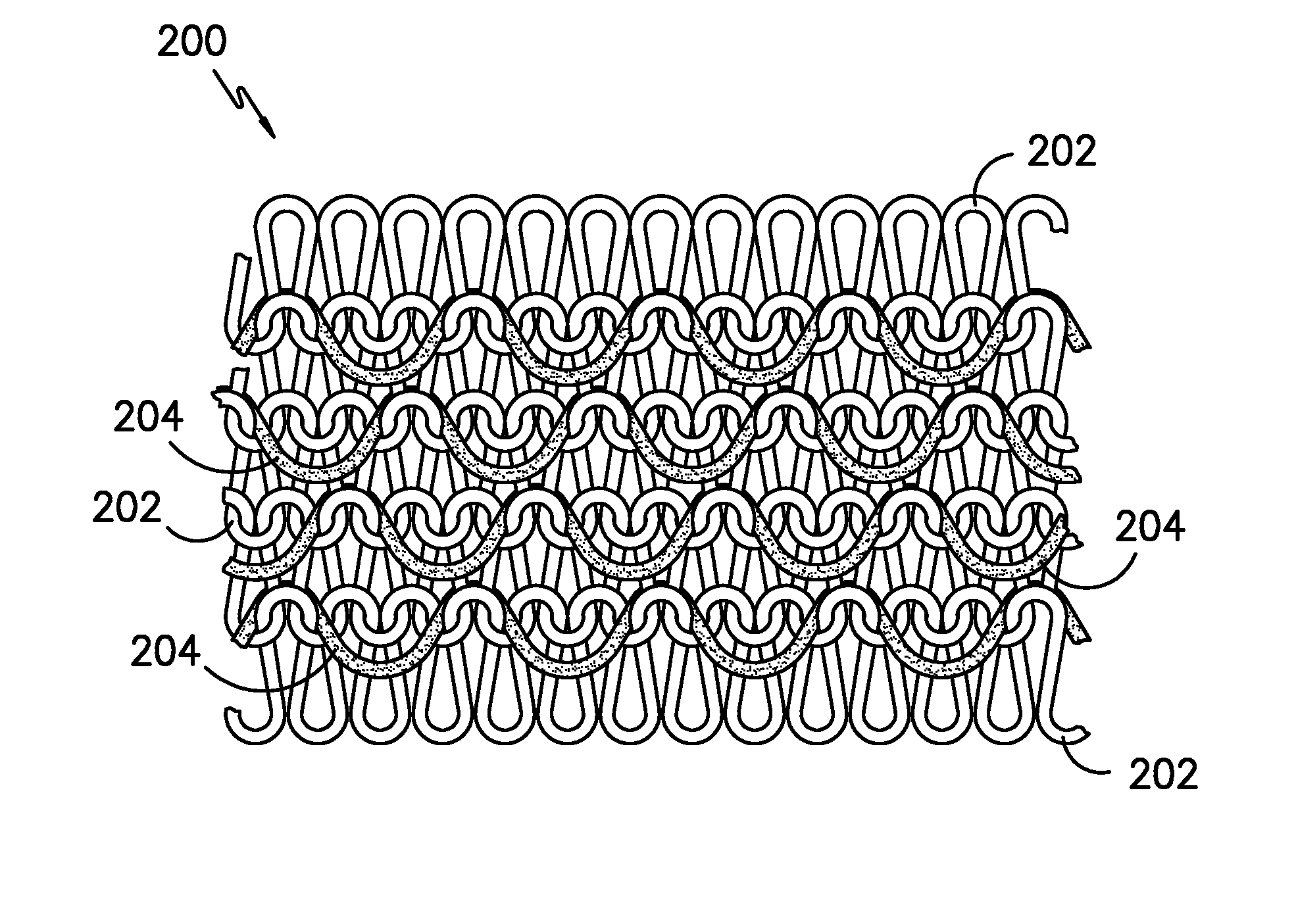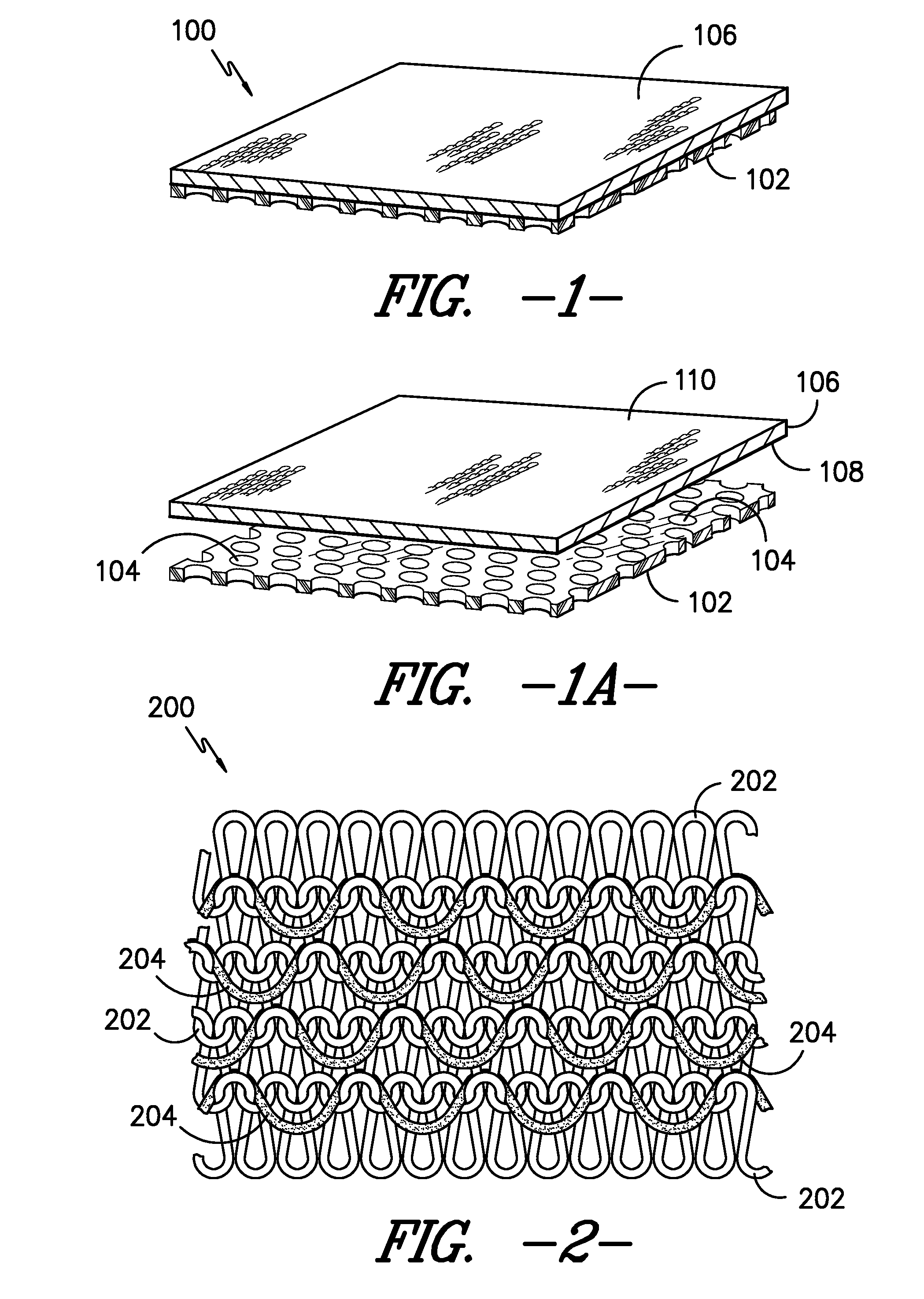Composite article suitable for use as a wound dressing
a technology of composite articles and wound dressings, applied in the field of composite articles, can solve the problems of increased infection potential, excessive protease enzyme activity, and unsatisfactory bacterial growth
- Summary
- Abstract
- Description
- Claims
- Application Information
AI Technical Summary
Benefits of technology
Problems solved by technology
Method used
Image
Examples
Embodiment Construction
[0016]As utilized herein, the term “surface energy” refers to the excess energy at the surface of a material compared to the bulk of the material (e.g., the interior portions of the material) and is usually expressed in terms of millijoules per square meter (mJ / m2). The surface energy quantifies the disruption of intermolecular bonds that occurs when a surface is created. The surface energy can be measured by several means including, for example, the Fowkes method. In this method, two reference liquids are used to first measure the dispersive component and the polar component of the material's surface energy. The surface energy of the material is then calculated from the measured dispersive and polar components. In general, a surface having a higher surface energy will exhibit a higher affinity for aqueous fluids, such as perspiration or wound exudate.
[0017]In a first embodiment, the invention provides a composite article comprising a fluid transport layer and a hydrophobic layer. A...
PUM
| Property | Measurement | Unit |
|---|---|---|
| thickness | aaaaa | aaaaa |
| thickness | aaaaa | aaaaa |
| thickness | aaaaa | aaaaa |
Abstract
Description
Claims
Application Information
 Login to View More
Login to View More - R&D
- Intellectual Property
- Life Sciences
- Materials
- Tech Scout
- Unparalleled Data Quality
- Higher Quality Content
- 60% Fewer Hallucinations
Browse by: Latest US Patents, China's latest patents, Technical Efficacy Thesaurus, Application Domain, Technology Topic, Popular Technical Reports.
© 2025 PatSnap. All rights reserved.Legal|Privacy policy|Modern Slavery Act Transparency Statement|Sitemap|About US| Contact US: help@patsnap.com



